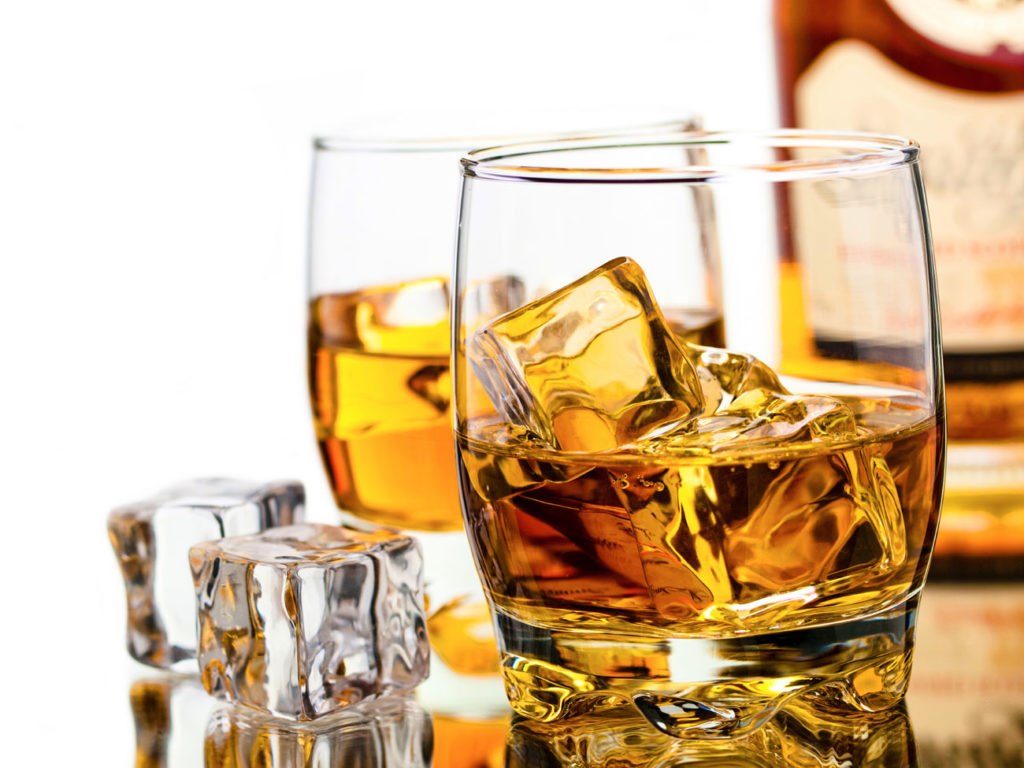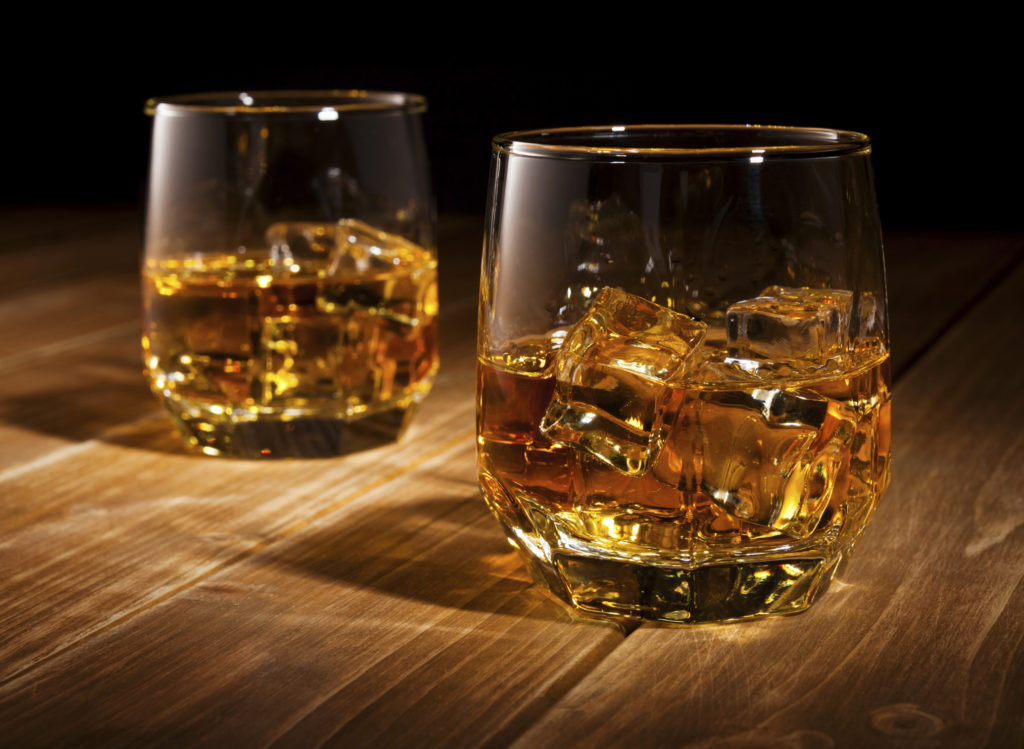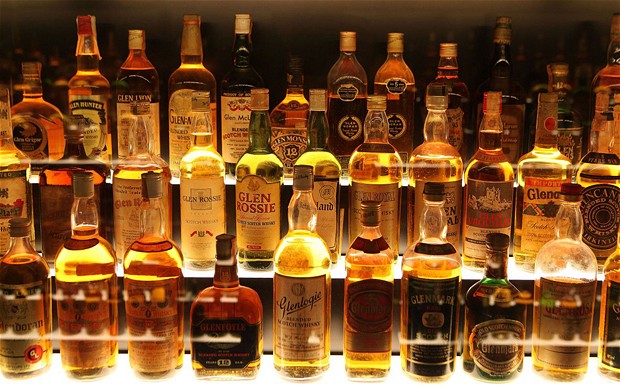Whisky is always an interesting proposal. The grain spirit is loved and consumed around the world and, subsequently, exists in many forms and varieties. Enjoying whisky is easy, studying not so much. As with wine, many factors come into play when it comes to making, ageing and enjoying whisky. This results in a rich jargon, explained in this article. Here’s whiskey’s ABC:

Photo: http://rbwhiskey.com
ABV: Alcohol by volume. The alcoholic strength measured as the percentage of alcohol present.
ACE’d: A term coined by Bruichladdich, meaning cask finish. It is an acronym for additional cask enhancement. (See Cask Finish).
Age: The age of a whisky is determined by the length of time the youngest spirit in the blend has spent in oak casks. Whiskies don’t continue to age in bottles.
Ageing: (see Maturation).
American Oak: Also known as White Oak, American oak is widely used in whisk(e)y barrels. It has a high vanillin content, grows fast and possesses high content of lactones (organic compounds and important ingredients in the aroma of whisk(e)y).
Angel’s Share: (also ‘Part des anges’) As the whisky ages a small percentage of alcohol evaporates, thus lowering the spirit’s abv. In Scotland this accounts for a loss of approximately 2% per annum, though the angels’ greed is heightened in warmer climes and this rate can increase; in India the angel’s share can account for a loss of as much as 12% abv per year.
Backset: An American term for the liquid at the bottom of the stills after distillation. This is added to the washback and the mash tun to prevent bacterial contamination.
Balance: The composition of a whisk(e)y, in terms of flavors and how well they go together.
Barley: A cereal grain which is often used in the production of whisky, and used exclusively in single malt whisky. Various strains of barley are used in whisky production.
Barm: (see yeast)

Photo: http://www.derechoenzapatillas.org
Barrel: A large wooden vessel used to store maturing spirit. In the whisk(e)y world these must be made from Oak. They are built by coopers and are of varying sizes, depending on the industry. A standard whisky barrel has a capacity of approximately 180 liters. The larger the barrel, the less wood contact with the spirit. So, a smaller barrel, in theory, can mature whisky faster.
Beer: An alcoholic beverage brewed from fermenting cereal grains. A liquid can only be distilled if there is alcohol present, thus the production of beer is the first stage in the production of whisk(e)y.
Beer Still: An American term for a wash still. (See Wash Still)
Bere Barley (aka Beir or Bear): A variety of six-row barley, mainly to be found on the Isle of Orkney. It is believed to be the oldest cereal to remain in continuous cultivation in the British Isles. The Vikings are credited to have brought the bere grain to Britain during the 9th Century AD.
Blended Malt: A vatting of malt whiskies from more than one distillery.
Blended Whisky: Malt whisky combined with grain whisky. By law there must be a minimum of 40% malt whisky.
Blending: The act of combining one liquid with another. Save for single cask whisky, blending is an important part of whisky production, particularly so in the production of single malt, where a selection of casks are blended together bringing various desirable characteristics to the finished product.
Bond: Storage facilities in which whisky is held before the excise duty is levied.
Bottled in bond:
- A term which states that excise duty has been paid.
- An American term which refers to whiskey that has been aged and bottled according to the stipulations laid out by the ‘Bottled-in-bond Act of 1897’. The whiskey must be the product of a single distillation season, from one distiller at a single distillery. It must be held for at least four years in a federally bonded warehouse and bottled at 50% abv.
Bourbon: An American whiskey distilled from a minimum of 51% corn, distilled to no more than 80% abv, filled into new charred oak barrels at no more than 62.5% abv.
Brewing: The act of mashing cereal grains in hot water and adding yeast to promote fermentation.
Burr Oak: A species of Oak native to North America and some parts of Canada. Also known as Bur Oak, Mossycup Oak and Mossycup White Oak. A fast growing Oak often marketed as White Oak, Burr Oak has been used to mature whisk(e)y, an example being Glenmorangie Burr Oak.
Butt: A butt is a large cask for maturing alcoholic beverages, made from oak, with capacity for 477.3 liters – roughly twice that of a hogshead. These are often used for sherry maturation.
Capacity: In whisk(e)y distillery terms, the capacity is the amount of pure alcohol (in liters) that a distillery can turn out a year.
Caramel: (see Spirit Caramel)
Cask: The barrel in which whisk(e)y is matured. By law, casks must be made from oak.

Photo: http://www.telegraph.co.uk
Cask Finish: The term refers to the maturation of whisk(e)y. When a whisk(e)y is transferred from the primary barrel to a secondary, or even tertiary, for an additional maturation, it is known as a Cask Finish. Of late, there has been a massive influx of ‘finished’ malts. Often the additional cask used is more ‘exotic’, and examples include Sauternes Cask Finish and Rum Cask Finish. Cask Finishing is fraught with much controversy, as purists argue it is not traditional and the finished spirit ceases to be a single malt. Proponents argue it allows for more variation and helps modernize the industry.
Charring: The act of firing the interior of an oak cask. This technique is of key importance in the production of bourbon and a charred barrel imparts sweetness to the spirit as well as vanilla.
Chill-filtration: A method of filtering whisk(e)y employed to remove residue and a cloudiness which appears when the spirit reaches lower temperatures. Chill-filtration involves chilling the spirit to between -10 and 4°C and then passing it through a very fine filter. At such temperatures the fatty acids, proteins and esters compound as large clumps that are too large to pass through the filter. This method is highly controversial for it is said to remove flavour and body from the whisk(e)y.
Chocolate Malt: Malted Barley that has been more heavily kilned. It is used in the production of sweet stouts and ports. It contains no enzymes.
Coffey Still: An enhanced version of the continuous still. It was enhanced and then duly patented in 1831 by the Irishman, Aeneas Coffey.
Column Still: (see continuous still)
Commercial Malting: Malting on an industrial scale.
Congeners: Chemical compounds, impurities formed during fermentation. It is said that these proffer the majority of characteristics present in whisk(e)y.
Continuous Still: A distillation device, which involves constant distillation and re-heating of an alcoholic liquid. This is an extremely efficient method of distillation and the distillate can be as high as 96% abv, though the spirit retains less character, thus is not favored for whisk(e)y production.
Cooper: A person who builds oak casks for the maturation of spirits and other beverages.
Cork Oak: A species of oak native to southwest Europe and northwest Africa. They are widely cultivated for their high content of Suberin, a water resistant substance, thus are used as bottle stoppers. Cork can be harvested from the Cork Oak every 9 to 12 years and harvesting does not damage the tree.
Corn: A grain used in whisk(e)y production, particularly favored in America, and in the production of Bourbon, in particular; Bourbon must be distilled from at least 51% corn. Corn was native to America when the first settlers arrived. It contains high levels of starch and protein. Of all grains, corn proffers the highest yield of alcohol. It gives a whisk(e)y a gentle sweetness, spice and an earthen character.



 0
0